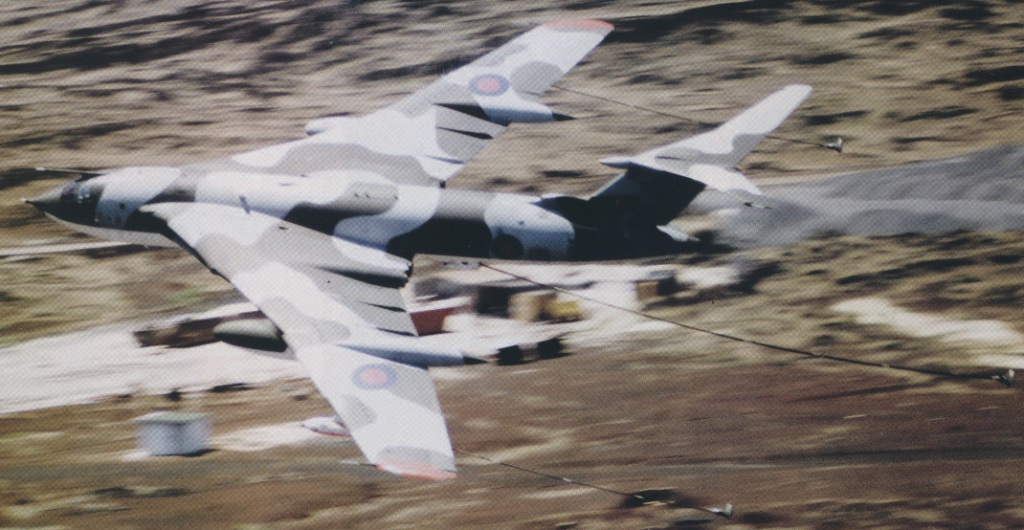Home › Forums › 57 Squadron › The Mystery of the Lone Roundel
- This topic has 0 replies, 1 voice, and was last updated 8 years, 1 month ago by
 Tony Gunby.
Tony Gunby.
-
AuthorPosts
-
27 April 2017 at 13:22 #1418
 Tony GunbyKeymaster
Tony GunbyKeymasterOriginally posted on 12 February 2014 by Roger Imm
Does anyone know why there was only one roundel? I was recently working on a model of Victor K1A Tanker, XH616, when I was reacquainted with the mystery of the lone roundel.
Victor Tankers during the 1960’s and early 1970s only had one roundel on the port wing, nothing on the starboard wing. This was true for 55, 57 and 214 Squadrons.[caption id="attachment_1420" align="aligncenter" width="1024"]
 Victor XH645 with two 74 Sqn Lightnings,1967[/caption]
Victor XH645 with two 74 Sqn Lightnings,1967[/caption]Then sometime during the 1970s the Victors regained the missing roundel.
[caption id="attachment_1419" align="aligncenter" width="1024"]
 Victor XL163, 57 Sqn, 1985[/caption]
Victor XL163, 57 Sqn, 1985[/caption]I remember reading somewhere, that all the early camouflaged V bombers (Valiant, Vulcan, Victor) only had one roundel. So maybe it was a effort to reduce visibility to the enemy? But then as you can see in the photos of XH645, the lone roundel was bright and highly visible. The later roundels on XL163 (see photo) were dull and blended in with the camouflage. A friend opined: “My guess the change happened after the start of the Vietnam war when the Australians, being fed up with being shot at by the Americans, solved the problem by removing one roundel. Their aircraft then matched American aircraft. RAF thought they’d better do the same…”
On 15 June 2014, David Houghton replied:
I’m fairly confident this had nothing to do with Vietnam – but it’s a good ‘tall tale’! Camouflage is a bit of a dark art. I once had the pleasure to be a co-opted member of an RAF camouflage working group (during a Staff Tour (a.k.a. desk job)), and it was like watching paint dry at times.
Clearly, the overriding point of camouflage is to reduce visibility. However, national markings such as roundels (required by international conventions/laws) tend to make aircraft more visible/obvious. At times (e.g. D-Day black and white stripe markings) this can be a good thing. However, in general, roundels etc. undo much of the good work carried out by the clever boffins who design camouflage schemes (which also tend to be a compromise of ideal camouflage requirements for a range of environments).
For that reason, the RAF has frequently reduced the size, number and conspiquity of its roundels etc. This was, I believe, the logic behind the single roundel on many RAF aircraft in the past (notwithstanding that such aircraft sometimes retained the red, white and blue roundel).
That practice continues to this day – modern RAF Typhoons generally have a single (small and ‘washed out’) roundel on the upper surface of the port wing, with no roundel on the upper surface of the starboard wing.
Basically, I think this has been going on (off-and-on) for a long time and the logic is simply to minimise the conspicuity of the aircraft while meeting national conventions/laws and., of course, the views of those who make the ultimate decisions on such issues.
-
AuthorPosts
- You must be logged in to reply to this topic.